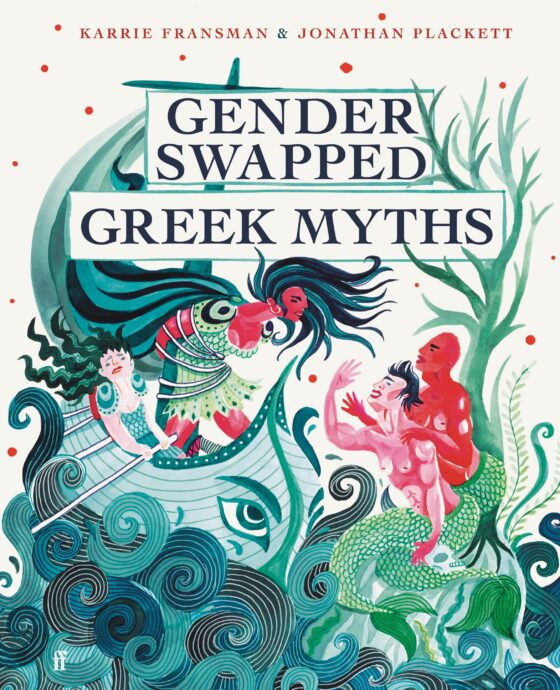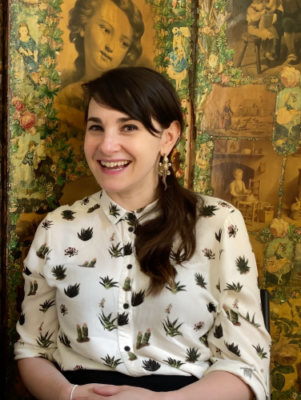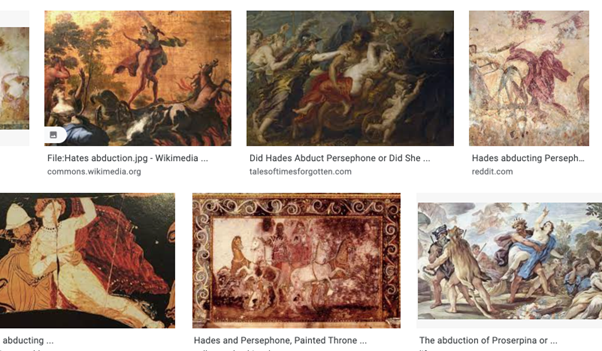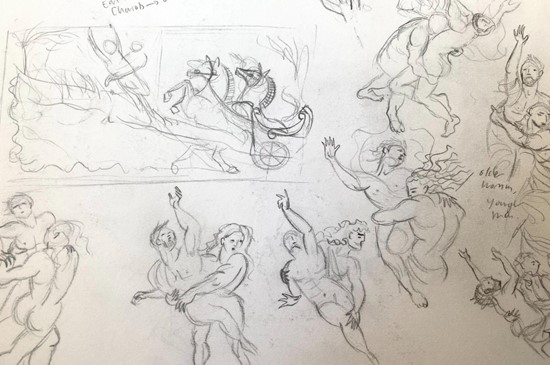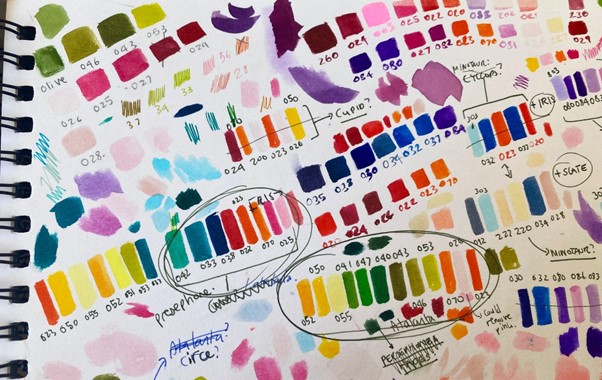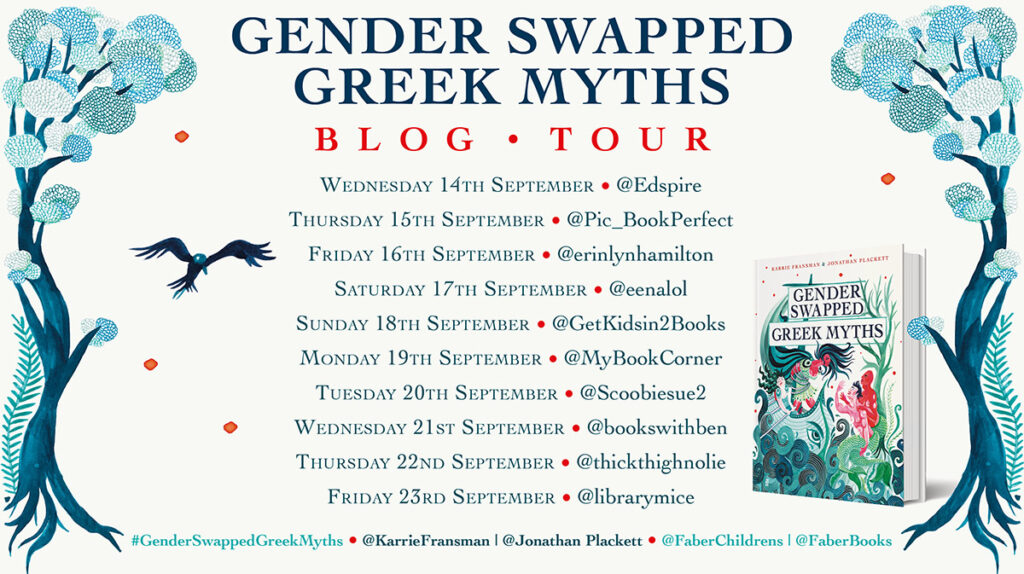Karrie Fransman & Jonathan Plackett
(Faber Children’s Books)
A couple of years ago I wrote about Gender Swapped Fairy Tales as part of the blog tour celebrating its release and the fascinating algorithm used by the book’s creators to literally swap one gender for another , with fascinating insights into how such tales might affect our gender bias as a result. This time the team focus on Greek myths, with tales equally anchored in our culture and steeped in patriarchal tradition. Greek heroes are often the epitome of macho behaviour, while Greek heroines are either conniving or feeble. The text created by the algorithm is therefore fascinating, challenging our perspective and our own bias. Are we comfortable with women becoming violent, blood-thirsty warriors for example? This is also highlighted remarkably well by the artwork which also challenges the imagery of Greek myths we have been “fed”, whether it is in book or film (even beloved 80s animé classic “Ulysses 31” could do with recalibrating its gender distribution).
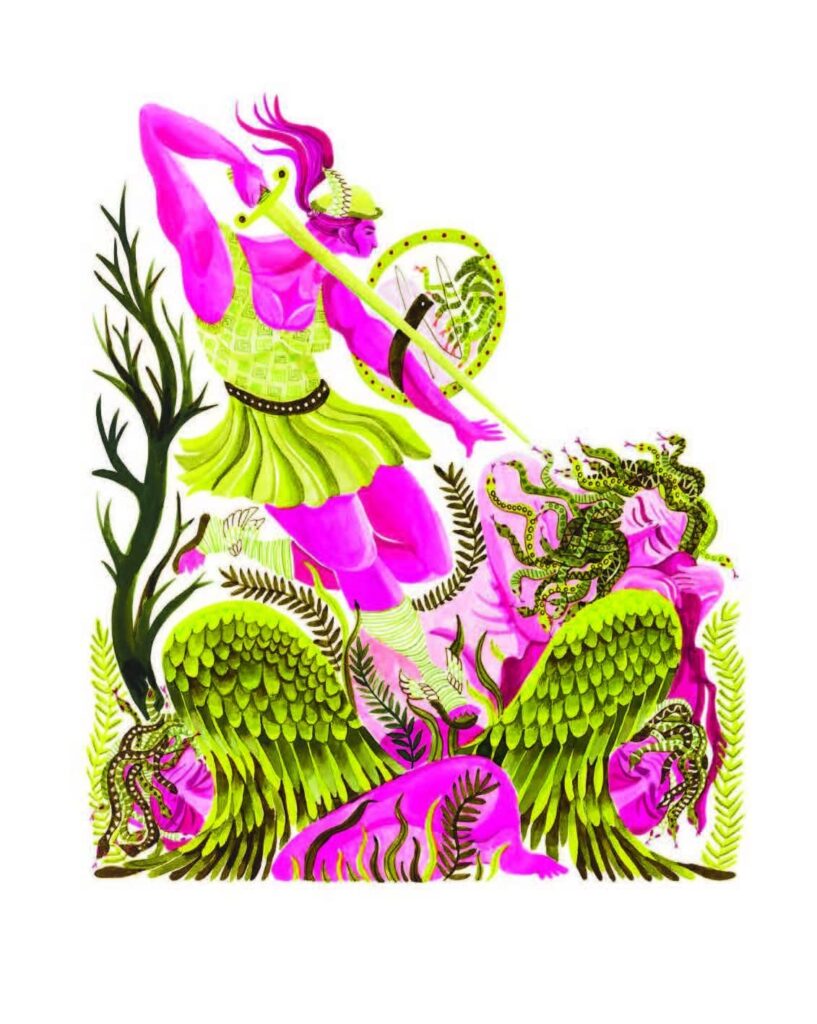
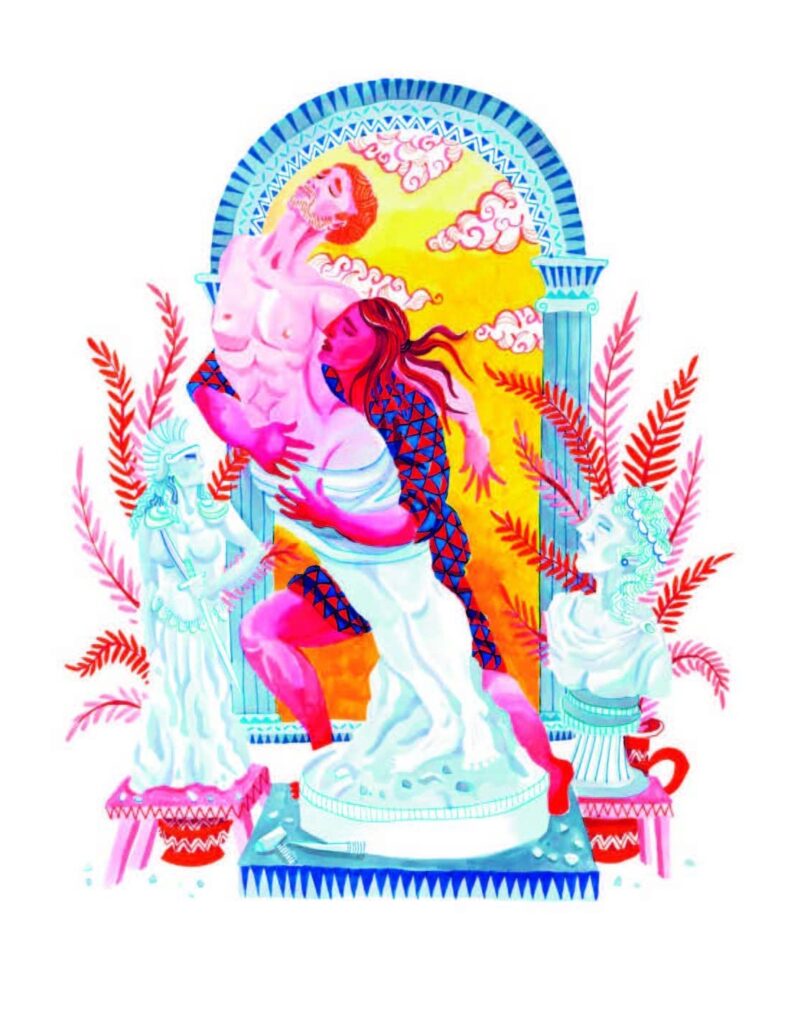
I was really fascinated by the artwork and therefore I am really delighted that Karrie agreed to write the inaugural piece of a new feature called Spotlight on a Page, where illustrators talk about a specific page or piece of artwork from their book.
Spotlight on a Page
with Karrie Fransman
Hello there! My name is Karrie Fransman and I am one half of the wife-and-husband team that created Gender Swapped Fairy Tales and now Gender Swapped Greek Myths (by Karrie Fransman and Jonathan Plackett published by Faber & Faber, 2022). One of my favourite parts of creating these books is I get to draw characters never imagined before who often break with the usual archetypes we see in books and on screens. With Gender Swapped Greek Myths – it was incredibly exciting to draw the monsters; a minotaur with udders (or a Minoheifer) or Medus with his snaky beard. It would have blown Little Karrie’s mind to think I could do this as a job one day!
The inspiration for our books came when Jonathan was little. His dad would read him and his sister bedtime stories, secretly swapping the genders of the characters in the books. We wanted to do the same for our daughters- giving them new and exciting characters to relate to whilst simultaneously making the adult readers think about the gender biases that exist in the stories we tell our children. Our books are created by running classical stories through a computer algorithm that Jonathan Plackett created. It swaps all the gendered language in any text, automatically turning ‘he’ to ‘she’, ‘god’ to ‘goddess’ and ‘hero’ to ‘heroine’. Having a computer rewrite our stories meant that we couldn’t influence the narratives with our own prejudices or assumptions about how each character should act. This also meant the analysis of the new stories was firmly left in the hands of the readers!
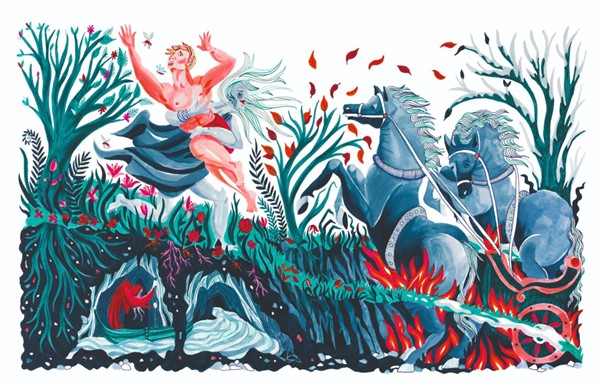
in ‘Gender Swapped Greek Myths’ (Faber & Faber, 2022)
Here’s a painting I did for the story of Persephone, Demeter and Hades ( …or in our gender swapped world- Persephonus, Demetrus and Hadia!). In the new, gender swapped version Demetrus- the God of the harvest- has a beautiful son called Persephonus. He is skipping innocently through the meadows one day picking flowers when the world splits open and up through the belly of the earth comes the Goddess of the Dead and Queen of the Underworld, Hadia. She grabs the beautiful Perseophonus and drags him back down to the underworld to be her husband forever.
I had an idea to draw the scene as a double page spread showing spring turning to summer and then to autumn and winter as we moved from the left of the page to the right. This is because Perseophus’ abduction kick starts her father Demeterus’ grief, the death of nature and the start of autumn and winter. I also sneaked in the underworld ferrywoman (Charona) in the caves below.
I researched all the most famous classical images of Hades abducting Persephone and was shocked to discover that most of them did not show Persephone fighting back! Her hands were flailing about or even gently placed on Hades’ back. Below you can see a Google Images search of some of these images:
With each image in the book I tried to focus on the power dynamics between the characters. With the illustrations I performed the same gender-swapping process as the algorithm in my research. I re-sketched all the most classic paintings depicting the abduction of Persephone, drawing them in exactly the same poses, but with the genders reversed. When I started to draw my own gender-swapped version it looked very strange to draw a ragdoll-like young man being non-consensually dragged off by a big, burly woman.
My illustrations were heavily influenced by Greek sculpture from the classical and Hellenistic periods (from around 500 bce). As in our first book, each story had its own contrasting colour scheme and I used watercolours and inks to create the images. I referenced ancient Greek pottery for many of the patterns I used in the textiles and architecture.
Here you can see me getting carried away creating a different colour pallet for each story. It’s so much fun playing with all these colours! The one on the left in the middle is the pallet I selected for Persephone’s story.
Our aim with our books is to make everyone think about gender and how the binary gender roles of ‘feminity’ and ‘masculinity’ are hidden in our language, texts and the stories we have told our children for centuries. One of our great joys is hearing from readers and listening to your own observations. So please do share your thoughts, observations and your own gender-swapped stories with us using the #genderswappedstories hashtag on social media or contacting us @KarrieFransman and @JonPlackett.
Thank you so much for this amazing insight into your work, Karrie!
Gender Swapped Greek Myths is out now. It can be purchased from your local bookshop or online from our partner bookshop Storytellers Inc.:
Don’t forget to check the other stops of the blog tour:
Source: review copy sent my publisher

